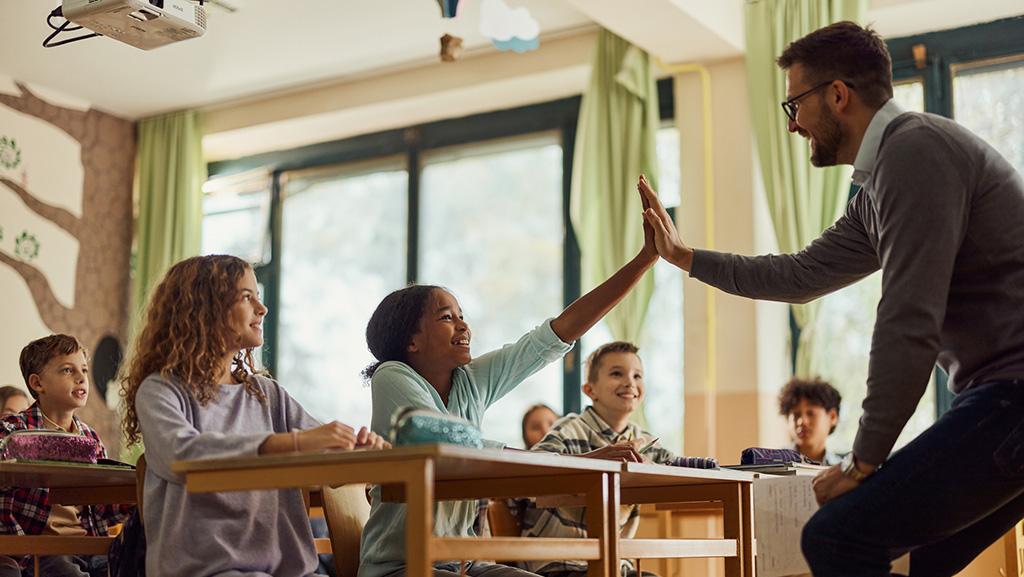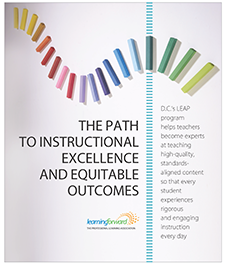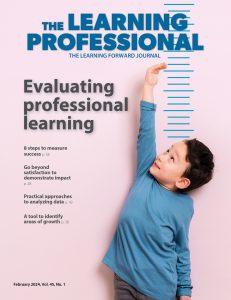With districts and schools in various stages of returning to in-person learning, instructional design must be flexible in order to meet the needs of students in many different learning situations. Educators grappling with instructional design can learn from schools that have employed principles of personalized learning. I’ve consulted with many schools and districts on how to make the shift to personalized learning and have learned lessons about how to improve effectiveness. At the top of the list is the lesson that schools need to ensure they are providing students with rigor and relevance in order to make the learning stick, regardless of whether students are learning in person, remotely, or in a hybrid model.
When it comes to instructional design, relevance helps students see the value of what they’re learning & rigor ensures they are challenged to develop advanced skills and knowledge. @Edu_Thompson Click To TweetRigor and relevance help students become complex thinkers. Both in and beyond school, students will have to work in teams with individuals from varied backgrounds to make choices and complete difficult tasks. Relevance helps students see the value of what they’re learning and rigor ensures they are challenged to develop advanced skills and knowledge. Rigor and relevance are also important for equity, because they ensure that all students have access and entry points to high-level content and skills.
Tips for teachers
Here are a few things that teachers should keep in mind when they are designing tasks to ensure rigor and relevance this year and beyond:
Here are a few things that teachers should keep in mind when they are designing tasks to ensure #rigor and #relevance this year and beyond by @Edu_Thompson: Click To TweetMake choices equal in rigor. When it comes to curriculum redesign, more and more schools are seeing the value of providing student choice, in order to give students ownership of activities and their own learning. Districts and schools that incorporated choice into their instructional design models had an easier time switching to remote learning when COVID-19 closed school buildings. Teachers could continue using choice boards, playlists, and pathways, and students knew what tasks they needed to complete and how to move their own learning forward. But choices are only valuable if they lead to rigorous learning opportunities, and often teachers create task choices that are not equally rigorous. Many students gravitate to the easier options (just like adults would do). For instance, when given a choice of how to demonstrate skills in fractions, more students will likely choose to solve five-word problems or come up with their own word problem rather than create a “how-to” video that teaches someone else how to add and subtract fractions. But when students take the easy route, they miss the opportunity to engage in more rigorous learning. When I coach teachers, I tell them to make sure the rigor of the options they are offering is relatively even so that all students will be challenged.
Apply concepts to real-world situations. Providing a situation that students would come across in their day-to-day lives makes content more relatable and meaningful than practicing skills in a rote way. For example, a teacher can have students review a weekly shopping ad and compare different sized cases of water sold at different prices to determine which offers the greatest value. This helps them understand how math is applied in the real world. Adding layers of challenge to the problem, such as specifying the amount of money the individual in the problem has in her wallet, can also build rigor in concert with relevance.
Plan with backward design. Determine what mastery looks like for the standard and then create purposeful tasks to help students understand the concept or skill. Jay McTighe and Grant Wiggins have a great backward design method (Wiggins & McTigue, 2011) that I’ve adapted to share with schools. I use a planning tool that has three stages: desired results (goals, understandings, and essential questions), evidence (indicators of students’ progress), and learning plan (with places for activities in multiple domains of knowledge).
Tips for administrators
Leadership is also important for building and ensuring rigor and relevance. Here are some steps administrators can take:
In this blog post, @Edu_Thompson recommends steps administrators can take to build and ensure rigor and relevance. Click To TweetLook at teachers’ tasks. During weekly planning meetings, or at least once a month, have teachers bring tasks along with student work samples and determine where the task falls on a rigor/relevance chart, such as the International Center for Leadership in Education Rigor/Relevance Framework. After determining where each task falls on the chart, have a discussion about how the teacher can tweak the task to make it a little more rigorous and/or relevant. This allows teachers to see that you are not asking them to create all new tasks but to make small improvements over time.
Define rigor and be explicit about what you want. At one school I worked with, I asked what rigor meant and none of the staff knew because the leaders hadn’t defined it. That is an important step that too often is missed. Often, administrators know what they want to see in classroom tasks, but they aren’t explicit about it when talking to their teams. Ask yourself these important questions: Have you clarified what rigor should look like and have you set your teachers up for success? If not, it’s time to create a definition and a plan. This way everyone will be on the same page and working toward the same goals.
Don’t expect change overnight. At one school, we started our work on increasing rigor and relevance in January and the principal wanted everyone on board by February. That’s not realistic. Making major shifts in how schools deliver instruction takes time and the process looks different in every school. Go at a pace that is right for your school, and start where it makes sense for your community. For example, you may want to start with a plan to offer student choice then add more rigor.
One percent better
When I talk about achieving success with school redesign, I tell teachers and administrators to get one percent better every day. I ask “what’s the one percent that you want to work on today?” and then help them build upon it. It’s a process, but eventually everyone will get to where schools are offering students rigorous and relevant tasks.
References:
Wiggins, G., & McTighe, J. (2011). The Understanding by Design guide to creating high-quality units. Alexandria, VA: ASCD. Available at https://www.ascd.org/ASCD/pdf/siteASCD/publications/UbD_WhitePaper0312.pdf
International Center for Leadership in Education (2016), The Rigor Relevance Framework. Rexford, NY: Available at https://leadered.com/our-philosophy/rigor-relevance-framework.php







